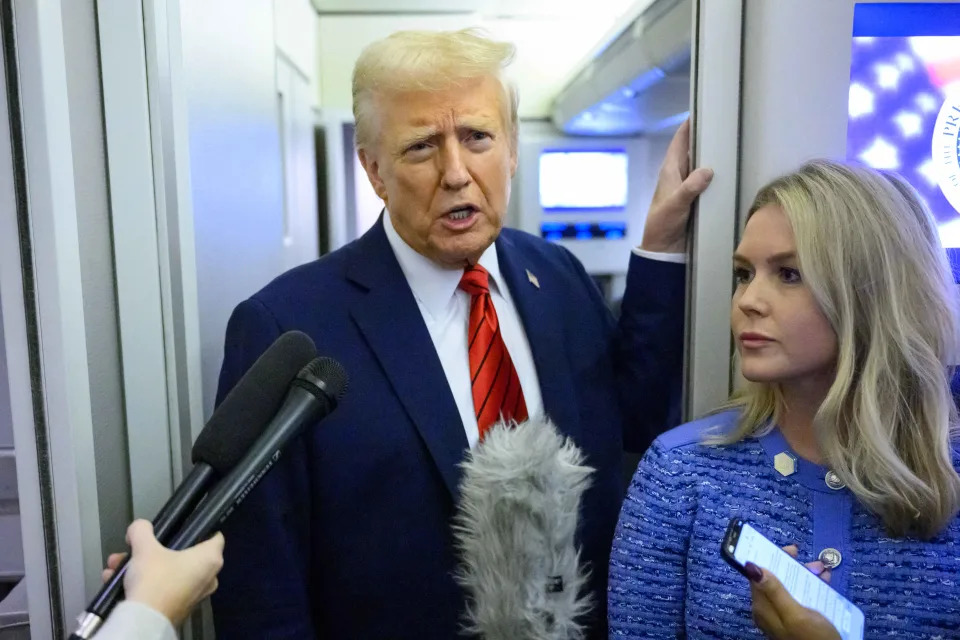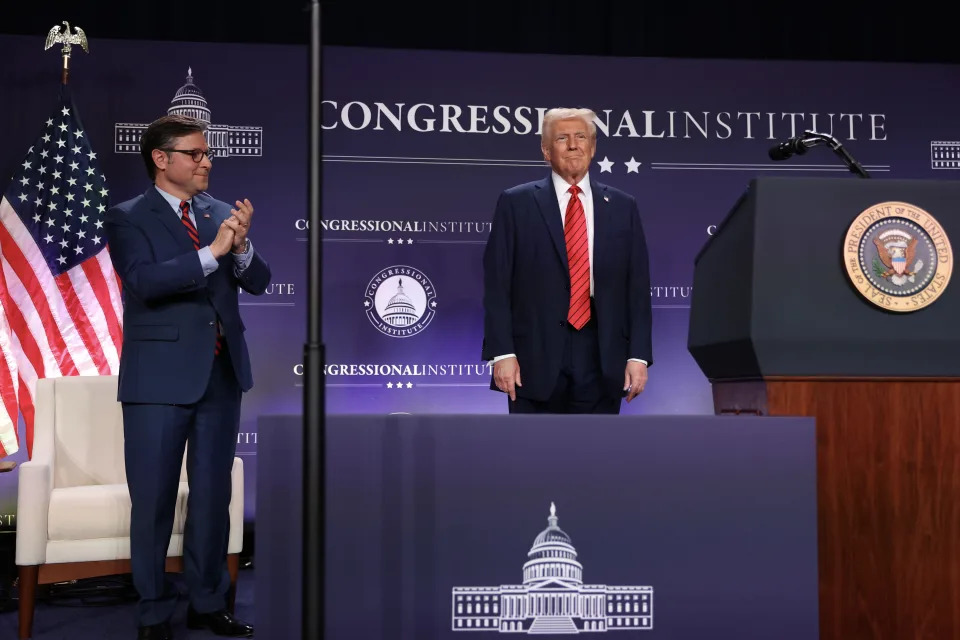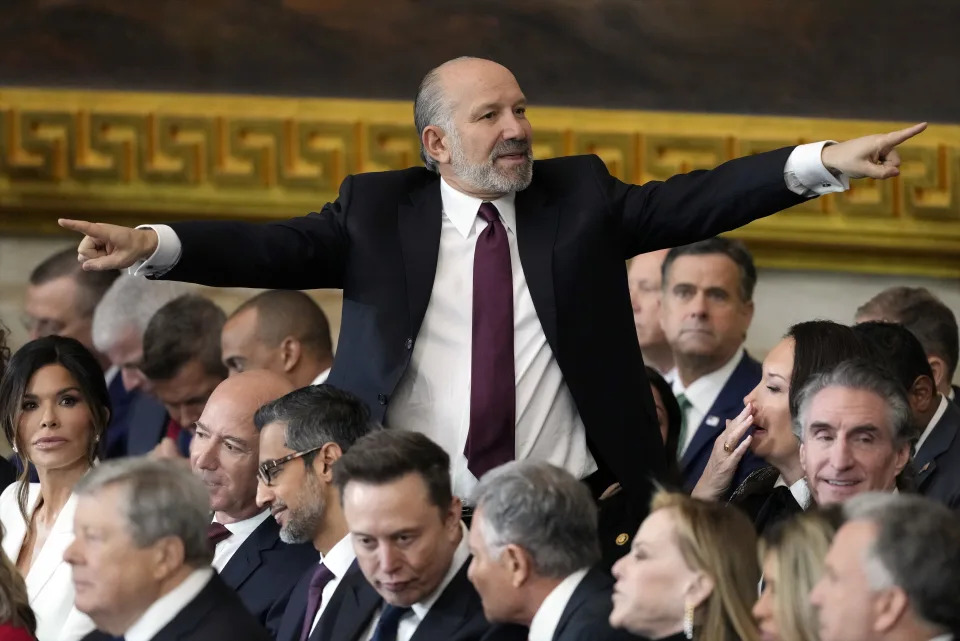Trump's orbit is trying to calm markets on tariffs — even if Trump has a different approach
New mixed messages this week about President Donald Trump's implementation of tariffs are flummoxing markets and businesses hoping for quick clarity on the 2.0 version of Trump's trade policy.
The main point of confusion is that public signals from Trump’s orbit often appear at odds with Trump himself.
The sometimes contradictory back and forth — a feature of the debate around tariffs since Trump's win — is taking on an outsized importance with the approach of Trump’s self-imposed Feb. 1 deadline, where he has promised to install 25% tariffs on Canada and Mexico and 10% duties on China.
Read more: What are tariffs, and how do they affect you?
Market observers are keenly trying to guess what will actually be installed, especially after an abbreviated weekend trade fight with Colombia that showed Trump willing to move quickly on tariffs but also willing to reverse course when the country backed down to his satisfaction.
This uncertainty will be on center stage Wednesday when commerce secretary nominee Howard Lutnick sits for his confirmation hearing.
Lutnick's comments on trade will be closely watched after Trump announced him as the leader of "our Tariff and Trade agenda."

Promises of tariffs that will be 'enough to protect our country'
The latest back and forth came in rapid succession on Monday following a Financial Times report that newly confirmed Treasury Secretary Scott Bessent is pushing a plan that would see Trump's plan for coming universal tariffs start at a lower level of 2.5% and then rise gradually.
Intentional or not, the report was taken as a clear and welcome signal to the markets, as gradual tariffs would allow businesses and supply chains to adjust even if the end result is the same.
But — as he has in the face of different apparent trial balloons in the past — Trump himself immediately poured cold water on the idea in favor of promising a maximalist approach.
Asked by reporters aboard Air Force One Monday night about the report, Trump denied it, said he wanted a rate "much bigger" than 2.5%, and even said he didn't think Bessent would be behind such an idea.
The coming rate, Trump added, "will be enough to protect our country."
The close focus on these signals from the new administration comes as business leaders try to plan and — in at least some cases — moderate Trump's plans.

"We've done a lot of scenario planning," said General Motors ( GM ) chair and CEO Mary Barra in a Yahoo Finance live interview Tuesday , adding that she has spoken to Trump on the issue and that she is confident the president "very much understands exactly what the ramifications will be."
Economists have been closely monitoring the situation, with a new Oxford Economics report this week considering the macroeconomic effect if Trump follows through on tariffs on our immediate neighbors.
"A trade war with Mexico and Canada is a key risk to the outlook," wrote Matthew Martin, a senior US economist. "We simulated a large tariff increase on Canada and Mexico and it would cause a big hit to the US economy," he added.
Other studies have found that the effects on Mexico and Canada could be deeper and an all-out trade war would likely be enough to push those countries into a recession.
A repeating pattern
This week's pattern was clearly reminiscent of an episode earlier this month after a Washington Post report floated the idea of Trump's aides (including Bessent) looking to place limits on his blanket tariff promises with some goods exempted.
Trump quickly stepped in — then as now — to deny that any limits were in the offing. The story "incorrectly states that my tariff policy will be pared back. That is wrong," he wrote at the time .
And earlier in the day Monday, Trump reiterated his tariff rhetoric in an appearance before House Republicans.
"We are going to immediately install massive tariffs," he told the crowd of countries that don't accede to his wishes, promising the duties would bring in trillions of dollars in revenue.
In the speech, Trump also made clear he plans to place duties on foreign goods like computer chips, semiconductors, pharmaceuticals, steel, and more in the "very near future" to return production of those goods to the US.

Meanwhile, close trade observers have been reading the signals in multiple ways as part of a lively ongoing debate around Trump.
"One theory," noted William Reinsch of the Center for Strategic and International Studies in a recent interview, is that the president's advisers think these trial balloons are "the best way to get his attention, rather than submitting a memo that he probably won't read."
He added some advice for the markets to "take a step back and wait for the dust to settle" but quickly noted that "nobody does that."
Ben Werschkul is Washington correspondent for Yahoo Finance.
Every Friday, Yahoo Finance's Rick Newman and Ben Werschkul bring you a unique look at how US policy and government affects your bottom line on Capitol Gains. Watch or listen to Capitol Gains on Apple Podcasts , Spotify , or wherever you find your favorite podcasts.

